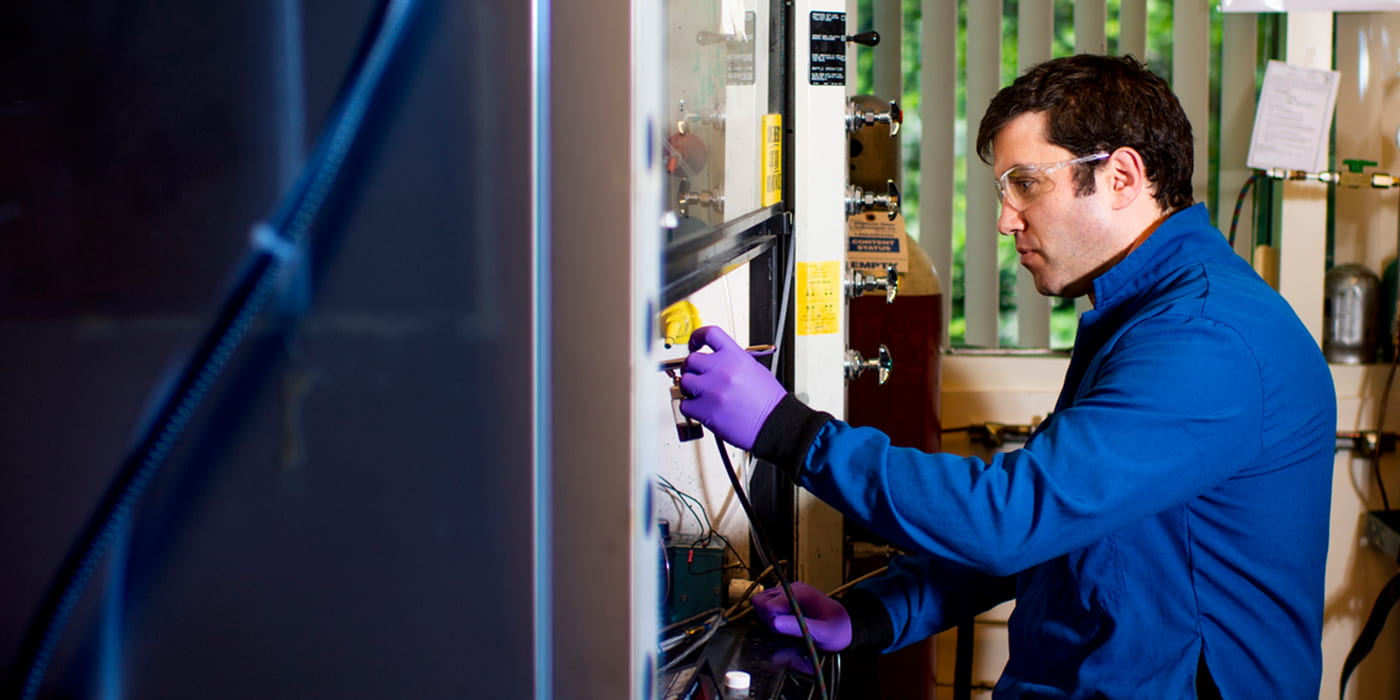Chemical Inventory

Key Takeaways
- Maintaining an accurate and continuously updated chemical inventory is required for all academic and research groups on campus.
- CHEMTRACKER is the chemical inventory system used at Northeastern University. This system is anchored within SciShield, Northeastern’s Laboratory Risk Management Platform.
- Hazardous materials must be entered or removed within one month of receipt, consumption, or disposal of a chemical.
- Guides and instruction are available to meet this requirement. LEARN MORE BELOW.
Overview
Laboratory, shop and studio supervisors are required to maintain active inventories of hazardous chemicals within the ChemTracker module in the SciShield (formerly BioRAFT) platform.
These inventories are required for several purposes including, but not limited to,
- meeting regulatory requirements that require accurate and updated chemical inventories,
- hazard communication and awareness,
- maintaining maximum hazardous chemical storage limits as mandated by the Boston Fire Code, and to
- facilitate hazard communication efforts with external emergency response personnel.
In addition, there is also an ability to share and recycle chemicals within ChemTracker, providing cost savings for lab groups and to minimize the generation of waste for both ecological and practical purposes.
Please note:
- Radiological materials are managed by the NU Radiation Safety Officer.
- Biological materials are managed through the Biological Safety/IBC module in SciShield.
- Facilities operations maintains their own chemical storage systems.
Keeping up to date
All applicable Principal Investigators, Teaching Faculty, and Laboratory Supervisors are required to maintain an accurate electronic chemical inventory.
Hazardous materials must be entered or removed within one month of receipt, consumption, or disposal of a chemical.
Personnel responsible for laboratory management must ensure that all information uploaded to ChemTracker is accurate and represents the active inventory.



Getting Started
- SciShield provides extensive “knowledge guides” to direct you through the Chemtracker system. These can be found on the NEED HELP button on your SciShield home page.
- Watch these SciShield training videos from their Youtube Channel:
- Large inventories that currently exist outside of ChemTracker can be bulk uploaded, for a fee, utilizing a custom-spreadsheet provided by SciShield. Please contact your College Safety Officer or OARS for guidance.
HAZARDOUS MATERIALS TO BE INCLUDED ON THE INVENTORY
- CHEMICALS
- Flammable Liquids
- Combustible Liquids
- Compressed gases
- Liquified gases
- Corrosives
- Oxidizers
- Metals
- Poisons
- Reactive Materials
ITEMS NOT REQUIRED TO BE INCLUDED IN THE INVENTORY
- Retail products used for routine household-like activities (e.g., cleansers or dish soap; however, do include bleach used in laboratory processes)
- Materials to be expended within 1-2 days (e.g., working solutions, working stock)
- Non-hazardous materials such as buffers
- Growth media
- Enzyme preparations




CHEMTRACKER requirements:
- Chemical Name
- CAS Number
- Chemical Hazard
- Chemical Synonym
- Physical State
- Specific Location (Bench, shelf, flammable cabinet, acid cabinet, base cabinet)
- If your lab has multiple storage cabinets, identifying the specific cabinet the material is stored in is required to meet Boston Fire Code requirements.
- For example: Lab XYZ has three flammable liquid storage cabinets. The cabinets are named and labeled as FLSC 1, FLSC 2, and FLSC 3. SciShield inventory would reflect the cabinet name where the inventoried material is stored.
- If your lab has multiple storage cabinets, identifying the specific cabinet the material is stored in is required to meet Boston Fire Code requirements.
- Date Received
- Expiration Date, when necessary to manage the risk associated with material instability over time.
- For example: A “Class A” peroxide has been purchased for XYZ. Class A peroxides have a shelf life of three months at which point disposal is recommended.
- Each container received from the manufacturer should be entered as a separate inventory item.
- For example, if you receive two 5-gallon drums of Ethanol (Drum A and Drum B) each should receive its own line item and associated inventory number.
- Quantities indicated in ChemTracker should include the total container size, not the amount remaining in the container. This way a more conservative maximum on hand will be reported.
- For example, if you have a 2-liter bottle of acetone listed in the ChemTracker inventory, your inventory will reflect 2 liters of acetone on-hand regardless of the quantity in the bottle. Once the container is empty, the 2 liters should be removed from the ChemTracker inventory.
- If a chemical is removed from an inventoried container and placed in a different container for use as working stock or part of a working solution, the container holding the working material does not need to be inventoried if the material is used within 48 hours.
Contact Lab Safety
Email: labsafety@northeastern.edu
Phone: 617.373.2769
